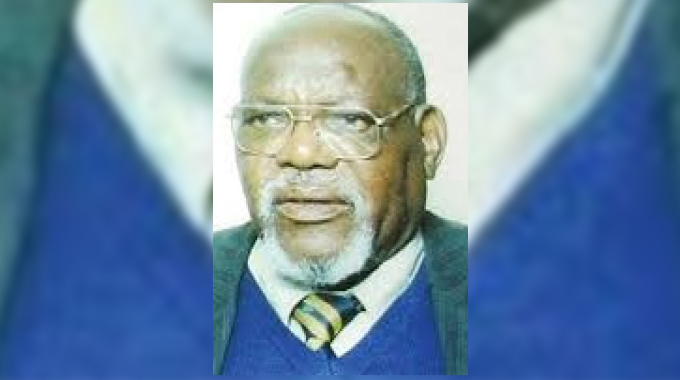Land reform a Zimbabwe success story. . . To be the basis for economic recovery under President Mnangagwa

Joseph Hanlon, Correspondent
In his speech after being sworn in as Zimbabwe’s new President on November 24, Cde Emmerson Mnangagwa stressed the role of the country’s land reform farmers in boosting the country’s economic recovery.
They have excelled recently.
Zimbabwe produced more maize in 2017 than was ever grown by white farmers, who have repeatedly been praised for turning the country into the breadbasket of Africa.
Maize production in 2017 was 2.2 million tonnes, the highest in two decades.
Good rains helped, but even the United States Department of Agriculture said the huge increase in maize production was “mainly due to favourable weather conditions and a special programme for import substitution, commonly termed “Command Agriculture”.
That programme was implemented last year by Cde Mnangagwa when he was Vice President.
Under the programme, land reform farmers signed contracts for a certain number of hectares and agreed to sell at least five tonnes of maize per hectare to the Grain Marketing Board.
The Government provided seed, fertiliser, and, if needed, tractors and fuel for ploughing, and the cost was deducted from the sale price of the maize.
Compared to 2011, another good rainfall year, maize production jumped 700 000 tonnes — more than half of which was due to the Command Agriculture programme.
Earlier this year, before he was dismissed as vice president, Cde Mnangagwa announced that the programme would be expanded for the coming agricultural season — when more good rains are also forecast.
The politics of land reform
Cde Robert Mugabe was displaced as president partly by pressure from the war veterans, who he led to victory in Zimbabwe’s independence struggle. But they had stood up to him much earlier, in 2000, as I documented in a book on the issue, written with Teresa Smart and Jeanette Manjengwa, who was recently appointed to the Zimbabwe Land Commission.
President Mnangagwa was a liberation war veteran, and as he said in his inauguration speech: “Dispossession of our ancestral land was the fundamental reason for waging the liberation struggle.”
As we showed in our research, by 2000 the white farms were mostly under-used and the war veterans were fed up with Cde Mugabe’s refusal to take them over. They moved against him. In a carefully organised campaign over the Easter weekend that year, 3 000 huge white-owned farms were occupied by 170 000 Zimbabwean families.
Cde Mugabe was initially opposed to the move, but when he saw the popularity of the occupation, he reversed his position — and was happy to be blamed for the occupation by the British press and media.
The occupation was legalised and small farms were marked out on the land that had been formerly owned by the white farmers. But the new farmers received little support and had to pull themselves up by their bootstraps. It took a decade, and the economic mismanagement and hyperinflation of the 2000s did not help, but the 146 000 smaller farmers with land of six hectares saved and reinvested and became highly productive — and created 800 000 jobs.
The development economist Ian Scoones points to the way vibrant market towns have grown up around the land reform farms.
But a group of 23 000 medium-sized farmers with 10-50 hectares had limited capital to start and farmed only part of their land. From their limited production they could not save enough to buy the fertiliser and tractors needed for the larger farms. President Mnangagwa’s Command Agriculture programme was aimed at this group, and credit provided by the programme more than doubled their maize production.
The other success has been tobacco, with $576m produced in 2017 — mainly by land reform farmers. Clearly, Zimbabwean farmers are willing to work hard, given the land and the opportunity.
The compensation question
President Mnangagwa has been part of the Government since independence, so this is only a change of leadership. Corruption dogged Zimbabwe under Cde Mugabe, but nevertheless, Cde Mnangagwa was already moving to curb it. Participation in the Command Agriculture programme was voluntary, but Cde Mnangagwa used the army to check that the agreed number of hectares had been ploughed and planted. Some senior figures from the ruling Zanu-PF party were arrested for fraud for selling fertiliser and diesel that was meant for other farmers.
Officially no family can have more than one land reform farm . . . Last year, under pressure, a Land Commission was named, and in his inaugural speech President Mnangagwa increased support for it “to ensure that all land is utilised optimally.”
The new president will need to rebuild links with the international community, and a vexed issue has been the demand for compensation for displaced white farmers.
President Mnangagwa said in his speech that “the principle of repossessing our land cannot be challenged or reversed”. But, he continued: “My government is committed to compensating those farmers whose land was taken.”
But that is a fraught issue inside Zimbabwe, because the white farmers received their land in the 1930s to 1950s only by expelling tens of thousands of Zimbabwean farmers already on the land.
Restarting and restructuring the economy will now be a priority. But President Mnangagwa recognises the centrality of farming and the success of the land reform, so agriculture is likely to take the lead. — Conversation Africa











Comments